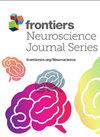精度优化神经网络不能有效模拟脑区 MSTd 的视流调谐
IF 3.2
3区 医学
Q2 NEUROSCIENCES
引用次数: 0
摘要
精确优化的卷积神经网络(CNN)已成为预测灵长类动物腹侧流脑区神经反应的高效模型,但它们是否能有效模拟互补的灵长类动物背侧流中的神经元,目前还不得而知。我们探索了 CNN 对 MSTd 背侧区域神经元的视流调谐特性的建模效果,并将我们的结果与非负矩阵因式分解(NNMF)模型进行了比较,后者成功地模拟了 MSTd 神经元的许多调谐特性。为了更好地理解 NNMF 模型中的计算特性在产生类似于 MSTd 神经元的视流调谐方面所起的作用,我们创建了更多的 CNN 模型变体,这些变体实现了 NNMF 的关键约束条件--非负权重和视流稀疏编码。虽然 CNN 和 NNMF 模型都能从纯粹的平移或旋转视流中准确估计出观察者的自我运动,但在对结合了观察者平移和旋转的更复杂视流进行测试时,NNMF 和具有非负权重的 CNN 得到的估计结果的准确性大大低于其他 CNN。尽管 NNMF 的准确度较低,但它比任何准确度优化的 CNN 都更接近灵长类 MSTd 的调谐特性。这项工作为深入理解描述灵长类区域 MSTd 光流调谐的计算特性和约束条件迈出了一步。本文章由计算机程序翻译,如有差异,请以英文原文为准。
Accuracy optimized neural networks do not effectively model optic flow tuning in brain area MSTd
Accuracy-optimized convolutional neural networks (CNNs) have emerged as highly effective models at predicting neural responses in brain areas along the primate ventral stream, but it is largely unknown whether they effectively model neurons in the complementary primate dorsal stream. We explored how well CNNs model the optic flow tuning properties of neurons in dorsal area MSTd and we compared our results with the Non-Negative Matrix Factorization (NNMF) model, which successfully models many tuning properties of MSTd neurons. To better understand the role of computational properties in the NNMF model that give rise to optic flow tuning that resembles that of MSTd neurons, we created additional CNN model variants that implement key NNMF constraints – non-negative weights and sparse coding of optic flow. While the CNNs and NNMF models both accurately estimate the observer's self-motion from purely translational or rotational optic flow, NNMF and the CNNs with nonnegative weights yield substantially less accurate estimates than the other CNNs when tested on more complex optic flow that combines observer translation and rotation. Despite its poor accuracy, NNMF gives rise to tuning properties that align more closely with those observed in primate MSTd than any of the accuracy-optimized CNNs. This work offers a step toward a deeper understanding of the computational properties and constraints that describe the optic flow tuning of primate area MSTd.
求助全文
通过发布文献求助,成功后即可免费获取论文全文。
去求助
来源期刊

Frontiers in Neuroscience
NEUROSCIENCES-
CiteScore
6.20
自引率
4.70%
发文量
2070
审稿时长
14 weeks
期刊介绍:
Neural Technology is devoted to the convergence between neurobiology and quantum-, nano- and micro-sciences. In our vision, this interdisciplinary approach should go beyond the technological development of sophisticated methods and should contribute in generating a genuine change in our discipline.
 求助内容:
求助内容: 应助结果提醒方式:
应助结果提醒方式:


